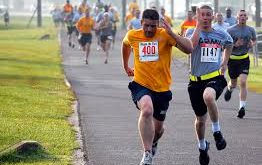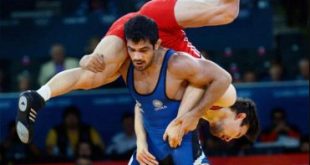Sports injuries have been classically defined as a new or recurring musculoskeletal complaint, or concussion incurred during taking part in any kind of sports, physical training and exercise that demands medical attention. It can be classified in different ways – direct and indirect, contact and non- contact, minor and major sports injury. Usually, sports injuries are mild or moderate. It generally occurs for two different reasons: trauma and over straining or over use of physical capacity.
Sports injury and its kinds
Traumatic sports injuries are usually obvious and may be due to improper or poor training practices, wearing improper sporting gear, being in poor health condition, improper warm-up or stretching practices before a sporting event or exercise. Overuse injuries are more common nowadays.
Overuse injuries often occur when the body is pushed past its current physical limits or level of conditioning. Poor technique and training errors, such as running excessive distances or performing inadequate warm-ups, frequently contribute to overuse injuries
All about the most common form of sports injury
The most common sports injuries are strains and sprains. Sprains are injuries to ligaments, the tough bands connecting bones in a joint. Stretching ligaments past their limits all of a sudden deforms or tears them. Strains are injuries to muscle fibres or tendons, which anchor muscles to bones. Strains are called ‘pulled muscles’ because overstretching or overusing a muscle causes tears in the muscle fibres or tendons.
Though biological tissues in the human body are stretchable, they break when stretched beyond a certain limit. Ligaments and muscle-tendon units are like springs. The tissue lengthens with stress and returns to its normal length, unless it is pulled too far out of its normal range.
Most common injuries & overuse syndromes
These include:
● Sprains and strains
● Joint injuries (knee injuries (ACL tear), ankle injuries, shoulder (labral & cuff tears), back injuries and neck injuries
● Dislocations & Fractures
● Achilles tendon injuries
● Groin pain
● Knee Patellofemoral Syndrome (an injury resulting from repetitive movement of knee-cap, Sinding-Larsen-Johansson disease, Sever’s disease, Osteochondritis dissecans, Jumper’s knee (patellar tendonitis)
● Muscle injuries, pulled muscles
● Tennis elbow, Little Leaguers’ elbow or shoulder
● Spondylolysis, Spondylolisthesis
● Hamstring strain
● Shin splints: Pain along the shin bone
Treating sports injuries
Some common sports injuries may take months to heal, even with good treatment. If a sprain or strain is severe, however, the entire muscle, tendon, or ligament is torn away, and surgery may be needed.
Being tough is good but one also needs to be smart. One must see a doctor if one suspects a serious injury or has any of these signs:
● Deformities in the joint or bone — it looks “crooked,” or moves abnormally
● One cannot bear weight or can’t use the limb without it “giving way”
● Excessive swelling
● Changes in skin colour beyond mild bruising
● It’s not getting any better after a few days of RICE therapy
One can limit swelling and start healing faster at home after most sports injuries by using the RICE principle.
R-Restrict activity: This will prevent worsening of the injury.
I-apply ice: Use ice for 20 minutes every 1-2 hours for the first 48 hours after the injury. Do not use heat during this time as it encourages swelling and inflammation.
C-apply compression: Compression with an elastic bandage will help reduce swelling.
E-elevate the injured area: Elevating the injured area above the heart will also reduce swelling.
Preventing sports injury
Sometimes, avoiding common sports injuries is beyond our control, but many times sports injuries are preventable. People bring a lot of injuries because they are not conditioned for the activity.
Adopt a sensible timetable, set realistic goals, plan and prepare with graduated exercise programmes
To condition the body for sports, one should work out in the early morning or evening when temperature is lower and should stick with their time table. One should adopt a regular, consistent and graduated exercise program customised as one’s activity needs that should include a blend of cardiovascular exercise, strength training, and flexibility. This will help to decrease your chances of injury.
The Three Musketeers: Nutrition, hydration and sleep
The first is effective nutrition. One should eat a balanced and nutritious diet that includes a good mix of key food groups such as protein, essential minerals like calcium, potassium and vitamins like vitamin D & B. Meal shots (small and frequent meals between an hour and 30 minutes) are really important before exercise to give oneself an energy kick.
Staying hydrated is of paramount importance. Adequate hydration is crucial to maintain health and minimize cramps and also to prevent dehydration, heat exhaustion, and heatstroke.
Sound sleep is an essential constituent of injury prevention programmes. It relieves fatigue accumulation, gives rest to the body, mind and increases attention span on field, in this way it decreases the possibility of injury occurrence on field.
Appropriate sports gear
Wearing protective gears such as helmets, gloves, protective pads, shin pads etc is vital to reduce chances of injury. Wear relaxed fit and breathable fabric to help prevent overheating and good running shoes supported by Gait Analysis to counter ground reaction force on joints. It also helps to correct certain foot problems that can lead to injury.
The holy trinity: Warm-up, stretching & cool down (pre- and post-exercise)
One should always start with gentle warm up by stretching the relevant muscle groups before the activities. To accomplish this, one must warm-up with jumping jacks, stationary cycling or running or walking in place for three to five minutes or jogging before one starts your exercise and then again afterwards to help one’s muscles cool down slowly.
Training with an assessment of technique, strength and flexibility
Many injuries happen because of poor technique and form. Some time should be invested to learn your machine, sports and correct technique. It is safe to restart exercises with a personal trainer, professional coach and consult one’s sports medicine specialist for your strength assessment before returning to sports activities.
Listen Your Body and take your time
Tendency of pushing beyond limits is not good for players. Enough time to the body should be given while regaining strength so that the body can get adjusted with increasing stresses. Appropriate rest is required when one feels like it.
Pre-hab is always better than rehab
Injuries can derail the best-laid fitness plans. The bed rest further ruins our resolve to stick to a fitness routine. With recovery there is rebound pampering by the family which may further complicate diet management and end up in adding extra pounds. The best alternative way to manage these injuries is prevention of their occurrence by using the above simple tips.
BY: Dr. Priyank Gupta, Senior Joint Replacement, Sports Injury Arthroscopy Surgeon, HCG Multi-Speciality Hospital Mithakkali Ahmedabad
 Newspatrolling.com News cum Content Syndication Portal Online
Newspatrolling.com News cum Content Syndication Portal Online






